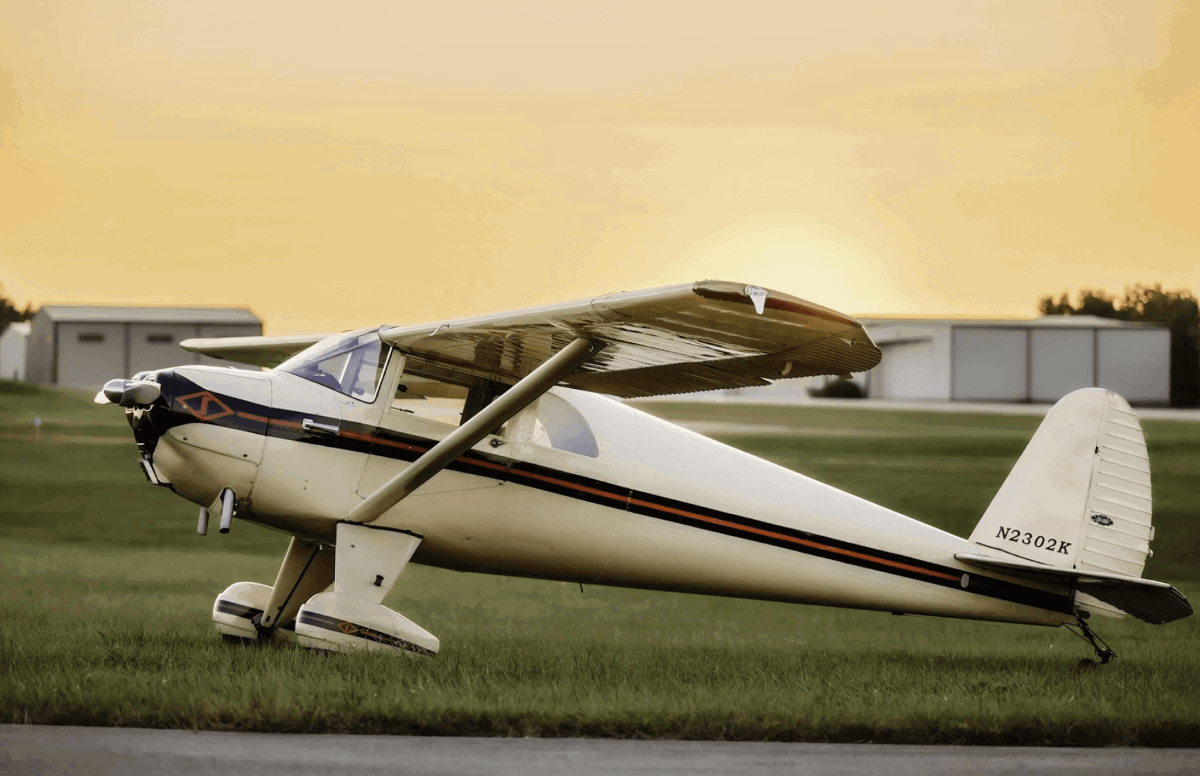The old Aeronca’s wood propeller paddled to a stop, letting me reflect on the peace and quiet of the flight as I slipped my earplugs out of their canals. Wearing a headset would have been superfluous, since there was no avionics in the sparse panel. I was back in my youth, when airplanes often didn’t have radios or we turned them on only when necessary.
The notion of making traffic advisory calls at non-tower airports originated with the arrival of Unicom stations in the 1950s. A request for an “airport advisory” would sometimes be returned with “wind out of the south, using runway one-nine, no traffic” if the attendant happened to be in the airport office. If not, we would make a call in the blind when entering the traffic pattern. It was presumed that no-radio airplanes could be occupying the airspace, so we kept a sharp lookout; if we were NORDO ourselves, we proceeded with extra caution.
Today, the ubiquitous boom microphone and PTT switch promotes cacophony on 122.8 or its alternates. A lot of pilots, myself included, can’t seem to resist the temptation to fill empty ether with electrons. I frequently hear an inbound pilot report 10 miles out, then 7, then 4, then 2, and once more on “short final.” The AIM procedure book recommends announcing one’s presence and intentions at about 10 miles, and transmitting reports on downwind, base and final legs, along with leaving the runway. This basic advice gets commonly expanded into expressing intent upon taxiing out, taking the runway, turning crosswind and leaving the area.
- RELATED: Choosing Headsets for New Pilots
Applying some common-sense technique would help quiet things down. Listen for a second before you talk; when “stepping on” another transmission, only a squeal gets heard, requiring a re-try. Keep it short, but say what needs saying; who you’re calling, who you are, where you are, and what you intend to do. Without those elements, you haven’t communicated. Communication only takes place when you’re understood; speak measuredly, not in cryptic habitual blurts.
Eschew excessive verbosity; in other words, keep it short. We don’t need to hear you’re “about to take the runway, making a turn to the southeast,” when “departing runway 18, turning southeast” will do. Adding just the airport name at the end helps the late-listener confirm your location. Be clear and concise; saying “ten-point-seven miles inbound on the ILS to Anytown runway zero-two” means little to a hearing student pilot to whom “ILS” is foreign language. I don’t care that you were once seven-tenths from the 10-mile mark; approximately 10 miles out on a straight-in is close enough. And the runway number is probably 2, not 02.
Please don’t tie up the Unicom/Multicom line with “How the heck are you?” visiting; that’s what 122.75 is for. “Going Fingers” isn’t a legit option; 123.45 is assigned to test flight use, so you’ll be trespassing. Just keep it short; “Fine, good to hear from ya,” is enough.
RELATED: ATC Communications – What to Say, and When
Never assume your self-important intentions have been heard and that everyone has cleared the airspace. There may be pilots out there without a radio, or with the volume turned down, or on the wrong frequency, or too busy to talk. Use the Mark 1 Human Eyeball as a separation tool. If I’m trying to teach a student how to land, we may have not have time for a base-leg call. If you heard us report on downwind a minute ago, you can assume that’s us on base. And if you say you’re on the downwind, be abeam of the runway, not still two miles out on an entry path or three miles away and 3000 feet high.
Always consider “Is this call really relevant?” before you transmit. Keep the airwaves open for vital reporting, not “Last call” or “any traffic out there, please advise.”
Top-Selling Aviation Gear in January
See what readers purchased for their aircraft in January 2025:




